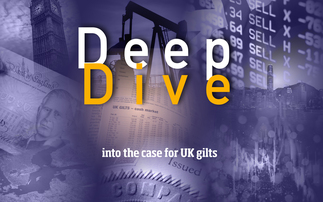Stevan Bajic, portfolio manager, Altana Corporate Bonds fund, explains why yield to maturity should not be the only metric for deducing the value of a bond.
Yield to maturity (YTM) has long been held as the standard for valuing any fixed income investment which an investor intends to hold until the borrower repays its debt. But how acceptable is it to consider YTM as the only way of calculating a bond’s value?
An increasing number of experts in the fixed income space are suggesting this approach is insufficient. The failings with considering YTM alone, is it does not consider the deteriorating visibility an investor has on the health of the company once they are investing beyond, say, two years.
Forward techniques
This is where forward credit rate comes into play. This technique acknowledges the deterioration in visibility, and indicates to the investor what the correct rate of return should be throughout the various stages of the life of the bond.
Choosing the right metric to value a bond
By utilising YTM alongside a forward credit spread analysis, the theory is that what the investor ends up with is a very distinctive bond selection process. It ensures only bonds with the most attractive risk-return profile over the lifetime of the bond are selected.
Credit rate calculation
Below, is a simplified approach to the forward credit rate, and in the box below are some examples of when it has been done with real companies.
The ability to predict the future decreases the further out one tries to look. Often, the longer the time horizon an investor has, the higher the investment risks. For this reason, investors should be highly compensated for this relatively ‘far-dated’ period of uncertainty.
The solution, through the forward credit rate calculation, is to decompose the bond risk in a series of risks, ie in a short-term high visibility, and longer-term lower visibility period.
As the diagram below shows, the breakdown of a bond’s maturity into high visibility (low risk), and lower visibility (higher risk) periods allows investors to quantify the reward for lower visibility, and thus the actual reward for the higher risk being faced. As such, the forward credit rate as a key return metric, quantifies that risk-reward.
Different approaches
This is different from the standard approach to valuing fixed income, when investors know the bond is safe for a certain period. The return metric used is a yield to maturity, which reflects the reward for the period until the bond matures.
However, until that maturity, there is a significantly long low visibility period which gets neglected in this view.
The approach comprising forward credit rate analysis has investors wanting to know the reward for the lower visibility period.
The return metric (forward credit rate), shows the real reward for taking on credit risk. Thus, this is a very distinctive approach for assessing the risk-reward profile of fixed income trades.
By comparing on the basis of the forward credit rate, an investor is able to choose bonds yielding the best forward rate, not just the best yield to maturity.
Forward credit rate: Risk decomposition
High and low visibility period of a five-year bond

Two examples of forward credit rates used in corporate bond issuanceThe Air France-KLM bond, maturing in 2016, has a 3.82% yield to maturity. Our 12-month forward rate calculation yields a forward rate of 3.37%. The first year of risk is discounted at 4.71%, which is the market rate of holding one year credit risk in that issuer. After the first year, the investor will be rewarded with, on average 3.37% annually until maturity, (ie for year two and three). While the bonds yield almost equally on a yield-to-maturity basis (3.82% vs. 3.75%), the forward rate calculation reveals a much higher rate for the latter (3.37% vs. 10.11%). Overall, 6.64% more annually. Higher rewards If both bonds are discounted at their respective risk rates during the first year, beyond the first year we get a much higher reward for credit, as well as interest rate risk, with the Trafigura Beheer bond. Another material fact is the Trafigura bond has only half of the remaining maturity (approx one and a half years vs three years) and thus also smaller interest rate risk. Even if credit or interest rates rise, there is a greater cushion in subsequent years in the Trafigura bond than in the Air France bond. This is especially important in the current environment when there is greater clarity on interest rates short term, than long term. For obvious reasons the risk-reward ratio in the Trafigura bond is far more attractive. However, the yield to maturity calculation alone would not reveal that.
|













